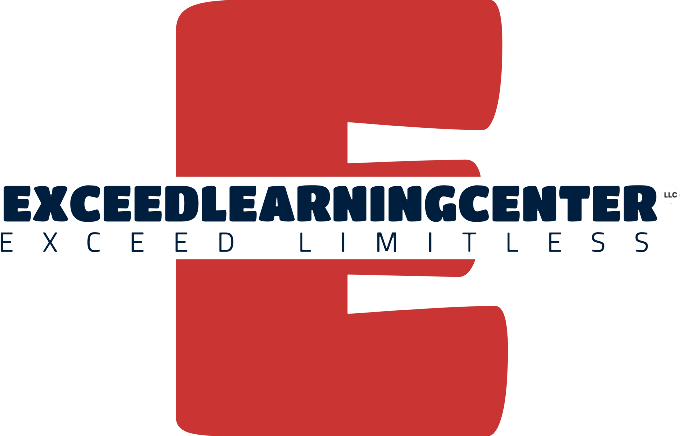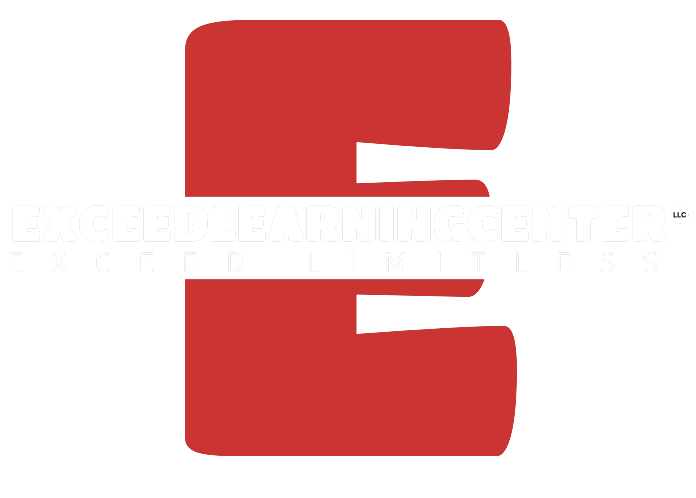Unlock Your Full Potential: How Personalized Tutoring Transforms Lives at Exceed Learning Center
In today's fast-paced educational environment, the role of tutoring has evolved significantly. Traditionally viewed as mere supplementary assistance, tutoring has emerged as a transformative process that empowers learners of all ages. At Exceed Learning Center, we emphasize that tutoring is not just about improving grades; it is about unlocking potential and equipping students with essential skills for lifelong learning.
Tutoring is defined as personalized instruction tailored to address the specific needs of learners, regardless of their academic levels. While many may assume tutoring merely provides extra help, the reality is that it offers targeted support that can dramatically change educational trajectories. Our approach at Exceed Learning Center is to ensure that we not only clarify academic concepts but also build confidence and self-efficacy in our students.
The Essential Role of Personalized Tutoring
Unlike traditional teaching methods that often employ a one-size-fits-all strategy, personalized tutoring focuses on the unique needs of each student. It involves identifying learning gaps and crafting customized learning plans that cater to individual capabilities. This tailored approach allows students to engage with the material at their own pace, ensuring mastery and retention of knowledge.
The significance of personalized tutoring can be summed up as follows:
- Pinpointing Learning Gaps: Tutors assess where a student is struggling and address those specific areas to prevent future challenges.
- Custom Learning Plans: Each student receives a plan that aligns with their strengths, weaknesses, and personal academic goals.
- Building Confidence: Students not only learn the material but also develop the self-belief needed to tackle challenges independently.
- Flexibility: Learning can happen in various subjects, at convenient times, and through teaching styles that resonate with the student's learning preferences.
This personalized approach is especially beneficial for students facing various challenges, including:
- Students who are falling behind in specific subjects
- High achievers aiming for accelerated learning
- Adult learners seeking further education or skill enhancement
- ESL (English as a Second Language) students acquiring language proficiency
Situations Where Tutoring Shines
While tutoring can be beneficial for any student, its impact is most profound in certain situations:
- Struggling Students: For learners grappling with difficult subjects, personalized tutoring can help bridge gaps and improve understanding.
- High Achievers: Students who excel academically can benefit from mentorship that challenges them further, preventing boredom and disengagement.
- Adult Learners: Returning to education can be daunting, but tailored tutoring helps adult students gain confidence and refresh core skills needed for success.
- ESL Students: Language learners require specialized attention, and our tutors provide focused support to accelerate the language acquisition process.
Research shows that students who receive personalized tutoring often exhibit significant improvement in not just their grades but also in their overall academic attitudes. At Exceed Learning Center, we harness this robust evidence to guide our methods, ensuring that every learner receives the attention they deserve.
As the demand for personalized learning increases, recognizing the power of tutoring is crucial for anyone looking to exceed educational expectations. Whether you are a parent seeking support for your child or an adult looking to expand your educational horizons, the transformative capabilities of personalized tutoring await at Exceed Learning Center.
The Exceed Learning Center Difference
At Exceed Learning Center , we believe that education is more than simply teaching academic content; it encompasses a holistic approach that nurtures the entire learner. Our commitment to a whole-person focus means that we not only work on academic skills but also on emotional well-being and essential life skills. This comprehensive approach ensures that students develop resilience, confidence, and a passion for lifelong learning.
A Holistic Approach to Education
In today's increasingly complex world, students face challenges that extend beyond their studies. A holistic approach to education at Exceed Learning Center includes:
- Emotional Support: Recognizing that external pressures can affect academic performance, we provide an environment where students feel safe and supported.
- Academic Growth: Our tailored tutoring sessions are focused on bridging gaps in knowledge, exploring subject matter deeply, and enhancing problem-solving skills.
- Life Skills Development: We teach students organizational skills, time management, and study techniques that will serve them well beyond the classroom.
Through personalized tutoring, students build confidence in their abilities, enabling them to tackle challenges both academically and in life.
Customization Over Standardization
We pride ourselves on the flexibility of our tutoring services, which cater to a wide range of subjects and schedules. Every student is unique, and our customized learning plans reflect that. Consider the following testimonials from our students:
- Maria: 'Thanks to my personalized plan, I went from failing math to acing my final exam. My tutor not only showed me the material, but also believed in me.'
- James: 'Preparing for the SAT was daunting, but the tailored strategies made all the difference. I felt more confident and scored higher than I ever expected.'
With personalized instruction, students can thrive in their subjects of choice, engaging with the material in ways that work best for them, regardless of their learning styles. Our tutors adapt their teaching techniques to fit the needs and preferences of each student.
Specialized Support for Test Preparation
Exceed Learning Center provides specialized tutoring aimed specifically at preparing students for college entrance exams such as the SAT, Regents exams, and the college application process. This targeted approach not only improves test scores but also enhances students' overall academic performance. Here are some highlights:
- SAT Preparation: We offer strategic approach sessions, targeted practice tests, and stress management techniques to alleviate test anxiety.
- Regents Exams: Our focused review sessions help students master content while developing exam-specific strategies to increase confidence.
- College Counseling: Assistance with application essays and personalized guidance helps students navigate their educational journeys effectively.
Success stories abound—many of our students have achieved remarkable scores and gained admission to their top-choice colleges. We utilize data-driven strategies to ensure a comprehensive understanding of academic content as well as test-taking techniques.
Getting Started with Exceed Learning Center
Embarking on your tutoring journey with Exceed Learning Center is straightforward and designed to ensure that every learner gains the most from their experience. Our first step is a comprehensive consultation that assesses a student’s academic needs and personal goals, allowing us to create a tailored learning plan that meets their specific requirements.
Easy Steps to Begin Your Tutoring Journey
To get started, follow these simple steps:
- Contact Us: Reach out to schedule your initial consultation, whether you’re seeking help for yourself or a child.
- Assessment: We assess academic strengths and areas that require improvement, which is crucial for creating a personalized plan.
- Goal Setting: Together, we define clear educational goals that guide the tutoring sessions and keep students focused on their progress.
- Select Your Tutor: Based on the assessment, we match students with a tutor who best fits their learning style and needs.
- Start Learning: Begin sessions either in-person or online, depending on your preference and convenience.
Online vs. In-Person Tutoring Options
At Exceed Learning Center, we understand that everyone has unique learning preferences, and that's why we offer both online and in-person tutoring options. Here’s a closer look at the benefits of each format:
- Online Tutoring: Our virtual sessions provide flexibility, enabling students to learn from the comfort of their own homes. This format also includes interactive tools that enhance the learning experience, such as screen sharing and online quizzes.
- In-Person Tutoring: For those who thrive in a traditional setting, our in-person sessions offer direct interaction and immediate feedback, fostering a supportive learning environment.
Regardless of the format chosen, both options include continuous feedback and progress tracking to ensure students stay motivated and aware of their advancements. This approach allows us to adjust the learning plan as needed, ensuring that every student can achieve their goals.
Conclusion: Investing in Your Future
Personalized tutoring at Exceed Learning Center is more than just an academic aid; it’s a long-term investment in your future. By unlocking skills that extend beyond the classroom, our students gain invaluable life skills, enhanced confidence, and a deeper understanding of their subjects. The supportive and personalized environment we provide helps learners from all walks of life to thrive and exceed their expectations.
As the academic year progresses and new challenges arise, the time to take action is now. By choosing to partner with Exceed Learning Center, you are taking the first step toward a brighter educational journey. Let us guide you in unlocking your full potential and achieving success that lasts far beyond grades alone.
Contact us today to get started, and let’s embark on this transformative journey together!
SHARE THIS POST:
Olga Binyaminov
Founder, Exceed Learning Academy
Together, we can exceed expectations and make the journey of learning a truly remarkable one for your child.
Leave A Comment
Search
Send us a Message
Blog - Website Form
Recent Posts
Quick Links









